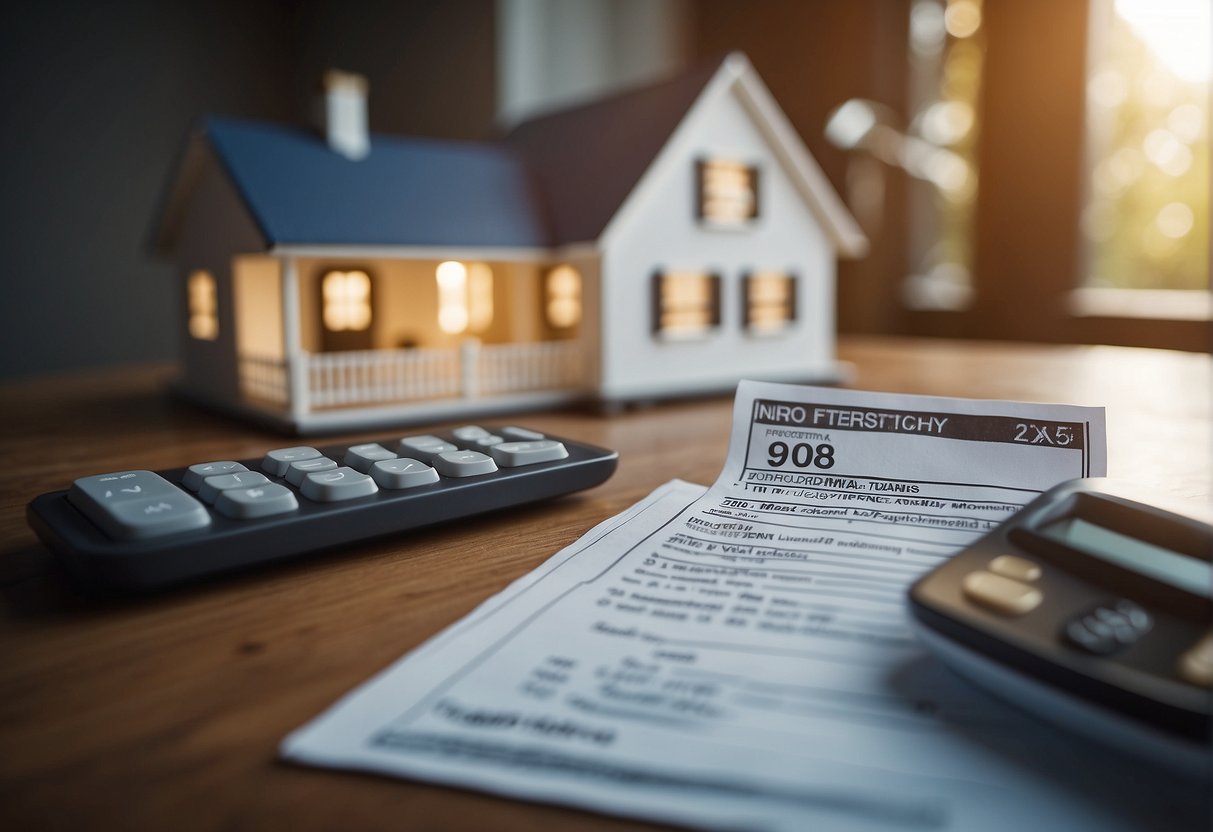In the realm of real estate, an Assessor’s Parcel Number (APN) plays a crucial role in property identification and transaction. It’s a unique code that local government tax assessors assign to a parcel of land to streamline various aspects of property management, including ownership records, tax assessments, and legal documentation. This number is key to distinguishing one property from another, much like a social security number for an individual, and ensures accurate tracking across various municipal and real estate databases.
Understanding an APN is essential for anyone involved in buying, selling, or managing properties. The number is typically used in property transactions to identify the exact location and to facilitate the transfer of ownership. It helps in the assessment of property taxes and serves as a reference point in public records. As each property has its distinct APN, this system of identification mitigates the risk of confusion or misidentification in densely populated areas where addresses alone might not provide adequate specificity.
Key Takeaways
- An APN uniquely identifies parcels of land in real estate transactions.
- This number is crucial for property taxation and legal documentation.
- APN aids in record-keeping and mitigating property misidentification.
Understanding APN in Real Estate
Navigating through the nuances of real estate requires understanding APN, which stands for Assessor’s Parcel Number, a critical component for property identification and record-keeping.
Defining APN
The APN, an abbreviation for Assessor’s Parcel Number, is a unique numerical identifier assigned to each parcel of land by the local tax assessor’s office. This sequence of numbers is instrumental in identifying, organizing, and facilitating the property tax process. They are essential during property searches, serving as a key reference in real estate databases and records.
History and Importance of APN
Over time, the APN has been established as an intrinsic part of real property record-keeping. Its creation was rooted in the need to have a systematic method to track parcels within a jurisdiction. The importance of an APN in real estate cannot be overstated—it ensures accurate reporting of property taxes, aids in property identification, and streamlines the conveyance and registration processes.
APN Structure and Variations
The structure of an APN number varies by jurisdiction but often includes a book, map, or block number, followed by a sequence representing the parcel. Furthermore, similar concepts such as AIN (Assessor’s Identification Number) or PIN (Property Identification Number) are also used in some regions. Despite these variations, all these identifiers serve the same purpose of facilitating record-keeping and search functions in real estate transactions.
How APN Is Used in Property Transactions

The Assessor’s Parcel Number (APN) is an essential identifier in the real estate sector. It provides a unique reference point for tracking property transactions, ensuring documentation accuracy, and aids real estate professionals in their duties.
Role of APN in Buying and Selling
When buying or selling property, the APN serves as a critical identifier. Buyers can use the APN to verify that the property details provided by the seller match public records. Conversely, sellers provide the APN to potential buyers and real estate professionals to facilitate the review of property information. This number ensures that all parties are referring to the same parcel of land, avoiding any potential confusion or mistakes during the transaction process.
APN in Legal Documentation
In the realm of legal documentation, a property’s APN is indispensable. It is often required on deeds, title reports, and various other legal forms. Lawyers and real estate professionals rely on the APN for a seamless and error-free transfer of ownership. The distinctiveness of each APN reduces the risk of legal complications stemming from misidentification of property in the US real estate market.
Importance for Real Estate Professionals
For real estate professionals, the APN is a fundamental tool. It aids in the accurate assessment of property taxes, locating land parcels, and conducting thorough due diligence before property listings or purchases. Without the APN, the ability of professionals to provide precise information to their clients would be greatly compromised. The APN simplifies the complex real estate landscape, ensuring that all transactions can be conducted with confidence and clarity.
APN and Property Taxation

The Assessor’s Parcel Number (APN) is an essential element in property taxation, aligning the tax assessor’s records with property owners’ tax liabilities. This numerical identifier ensures accuracy and efficiency in tax assessment and billing processes within the United States.
Assessing Property Tax
The tax assessor is responsible for determining the value of property for the purpose of taxation. They use the APN as a unique reference to ensure that each property is appropriately assessed. The property tax information linked to an APN includes the owner’s details, property boundaries, and the assessed value. This value is subject to local tax rates set by the local government and is fundamental in calculating property taxes owed.
APN on Tax Bills
Property owners receive a property tax bill which details their tax obligations. The APN is prominently displayed on these bills, serving as the main identifier for the parcel being taxed. Taxpayers can reference their APN number to access or query their property tax information with the appropriate local taxing authority.
Influence of Jurisdiction on Taxation
Taxation rates and policies can vary significantly depending on the jurisdiction. Each local government in the United States has the authority to set its own tax rates and assessment methodologies. As such, the APN structure may differ between jurisdictions, affecting the format and classification used on tax bills and in property tax information systems. However, regardless of the jurisdiction, the role of the APN in the taxation process remains critical for taxing authorities to maintain accurate and up-to-date records for property assessment and tax collection.
Locating and Understanding APN Information
When engaging with real estate transactions or research, knowing how to locate and comprehend an Assessor’s Parcel Number (APN) is crucial. This section guides readers through the intricacies of finding and interpreting APN data, which varies by location but is essential for accurate property identification.
Finding APN Details
The search for an APN typically begins at a local county assessor’s office where each lot is assigned a unique APN. These numbers are often found on property tax statements or can be obtained by providing specific addresses or owner information directly to the assessor’s office. In addition, some regions provide physical map books where APNs and corresponding properties are listed, allowing individuals to visually match a property with its APN.
Interpreting Map Book and Page Numbers
An APN is often divided into sections that reference distinct boundaries and locations within a county’s mapping system. This sequence commonly includes a map book and page number, where the map book represents a larger area and the page pinpoints the exact parcel within that area. Understanding this breakdown enables one to navigate land records with precision and identify the property’s legal description.
Accessing Online APN Resources
Nowadays, many counties offer online tools where APNs can be easily retrieved by inputting a property’s location or owner’s name. These digital platforms provide a vast array of data including, but not limited to, APN numbers, property boundaries, ownership history, and valuation information. These resources make it easier for anyone to conduct a thorough search without the need to visit local government offices.
One should visit the respective county’s official website or use reputable third-party services that compile public records. It’s important during this online search to verify that the data obtained is up to date and corresponds accurately to the desired lot.
APN in Property Identification and Record-Keeping
The Assessor’s Parcel Number (APN) is critical for pinpointing specific plots of land and maintaining detailed records. It provides a systematic approach to tracking parcels across various transactions and bureaucratic processes.
Unique Identifiers and Their Use
APNs serve as unique identifiers for individual parcels of land, similar to how a dynamic IP address uniquely identifies a device on a network. Each parcel number is a property identification number or property account number, which is distinct from any other and avoids confusion between properties. These numbers are often used in conjunction with a tax account number or a Sidwell number, depending on the locality’s preference.
Maintaining Accurate Property Records
Precise record-keeping is enabled by APNs, ensuring that each plot of land is accounted for in public records. A parcel, identifiable by its APN, can have various attributes recorded, such as ownership, tax assessments, and lien information. The APN effectively acts as an assessor’s identification number (AIN) or property identification (PID), essential for legal and financial documentation.
Technology in APN Record-Keeping
Technological advances have streamlined how APN records are kept and accessed. Digital databases now store parcel information, assigning a unique identifier to each block and parcel, making property data searchable for both government agencies and the public. This innovation ensures the APN fulfills its purpose efficiently in a world where property identification and record-keeping are increasingly complex.
APN in the Context of Planning and Development
An Assessor’s Parcel Number (APN) serves as a foundational component in both planning and development within the real estate sector. It affords clarity and precision when addressing various parcels of land, particularly during the evaluation and mapping phases.
APN for Land Use Planning
For land use planning, the APN is indispensable. It provides a unique identifier for each parcel, which helps planners to accurately trace land ownership, zoning classifications, and the geographic details of vacant land. Utilizing the APN, local planning authorities can maintain systematic records that assist in developing comprehensive land use maps and policies. This practice ensures that each parcel is considered within the broader context of community planning, and decisions regarding land use can be made with a precise understanding of the property’s characteristics.
Development Projects and APN Alignment
When it comes to development projects, ensuring alignment with the APN is crucial for developers and the local taxing authority. Whether a project involves constructing a new residence or redeveloping an existing structure, the APN provides a reliable reference that helps in the consolidation or subdivision of parcels. This number facilitates coordination between developers, municipal planning departments, and taxing authorities, guaranteeing that each entity is referring to the exact same piece of property. APNs also play a role in the creation of legal documents and the tracking of changes to a parcel throughout the development process, ultimately supporting the transparent progression of development projects within the community.
Frequently Asked Questions
This section addresses common queries regarding the Assessor’s Parcel Number (APN) to help provide clarity on its role and importance in real estate.
How can I locate the Assessor’s Parcel Number (APN) for a specific property?
One can find the APN for a property through county tax assessor databases, title search companies, or by reviewing property tax bills. Details on what a property APN looks like can be found here.
What is the significance of an APN in property transactions and ownership?
The APN is a key identifier for property parcels, essential for tracking ownership, conducting transactions, and ensuring accurate property taxation. An APN’s role is elaborated here.
Can you explain if an APN number is the same as a property’s parcel number?
Yes, the APN is equivalent to a property’s parcel number; it’s a unique identifier that tax assessors use to distinguish one parcel of land from another.
What steps are involved in performing an APN parcel number lookup?
To perform an APN lookup, one typically starts by identifying the relevant county tax assessor’s website, then entering the address or owner’s name to find the parcel number. Guidance for this lookup process can be found here.
What are some examples of how APN numbers are formatted?
APN numbers generally consist of a series of digits representing the map book, page, and individual parcel. The format varies by jurisdiction but typically includes at least three sets of numbers.
How does the APN factor into planning and building processes in real estate?
APNs are utilized by local planning departments to ensure zoning compliance and by building departments when issuing permits, showing the land’s entitlements and restrictions.

